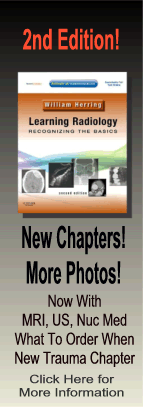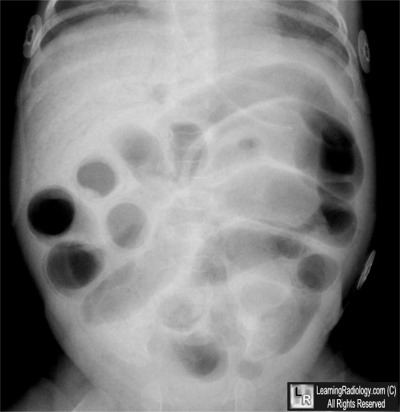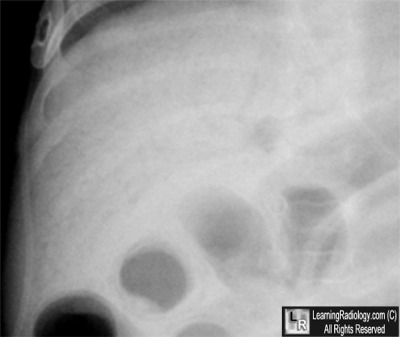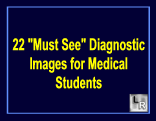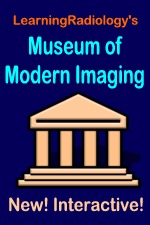| Cardiac | |
|---|---|
| GI | |
| Bone | |
| GU | |
| Neuro | |
| Peds | |
| Faculty | |
| Student | |
| Quizzes | |
| Image DDX | |
| Museum | |
| Mobile | |
| |
Misc |
| Videocasts | |
| Signs | |
Learning
Radiology:
Recognizing
the Basics
Available
on the Kindle
and IPad
LearningRadiology Imaging Signs
on Twitter
![]()
Follow us on
What is the most likely diagnosis?
- Premature newborn with distended abdomen
- Duodenal atresia
- Meconium ileus
- Malrotation with midgut volvulus
- Necrotizing Enterocolitis
- Nematode infestation
Additional Images-Close-up of right upper quadrant
![]()
Answer:
4. Necrotizing Enterocolitis
More (Click Discussion Tab)
Necrotizing Enterocolitis
General Considerations
- Most common gastrointestinal medical and/or surgical emergency occurring in neonates
- Etiology
- Remains unknown
- Ischemia and/or reperfusion injury may play a role
- Cluster cases and outbreaks in nurseries imply an infectious etiology
- A single causative organism has not been found
- Translocation of intestinal flora across compromised mucosa may play a role
MORE . . .
.
This Week
Premature newborn with distended abdomen |
Some of the fundamentals of interpreting chest images |
The top diagnostic imaging diagnoses that all medical students should recognize according to the Alliance of Medical Student Educators in Radiology |
Recognizing normal and key abnormal intestinal gas patterns, free air and abdominal calcifications |
Recognizing the parameters that define a good chest x-ray; avoiding common pitfalls |
How to recognize the most common arthritides |
LearningRadiology
Named Magazine's
"25 Most Influential"
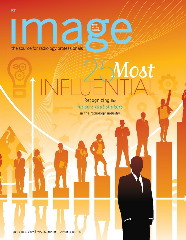
See Article on LearningRadiology
in August, 2010
RSNA News
| LearningRadiology.com |
is an award-winning educational website aimed primarily at medical students and radiology residents-in-training, containing lectures, handouts, images, Cases of the Week, archives of cases, quizzes, flashcards of differential diagnoses and “most commons” lists, primarily in the areas of chest, GI, GU cardiac, bone and neuroradiology. |

